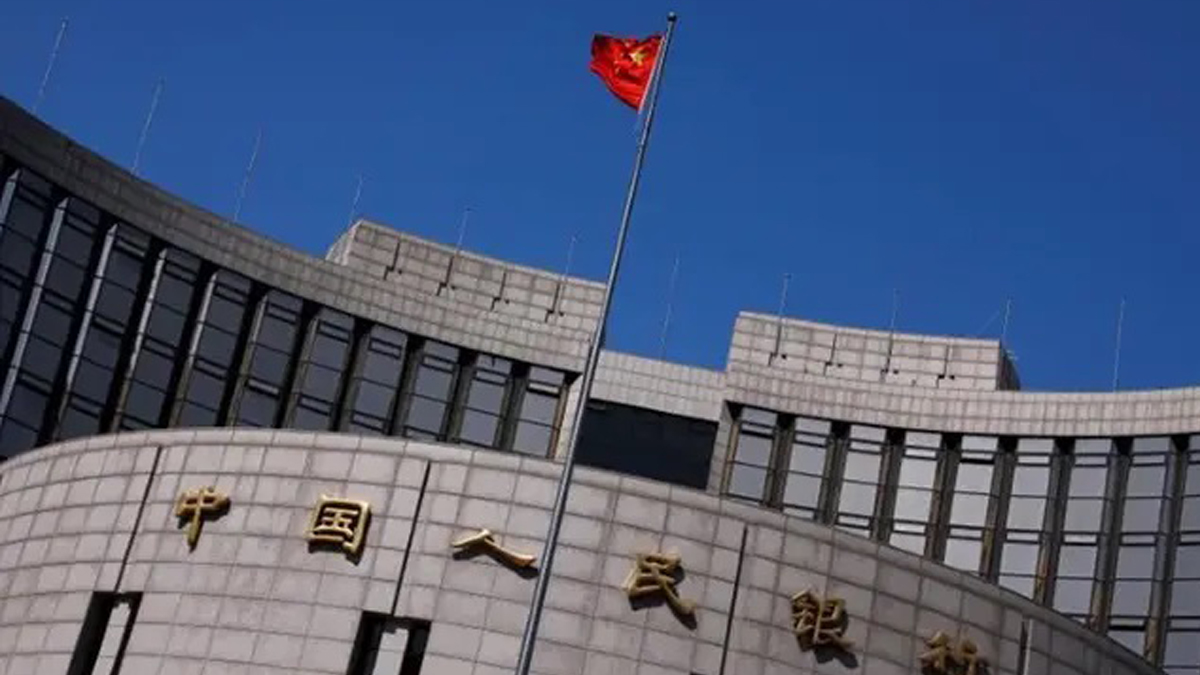
Rising Local Debt Crisis Threatens Stability of China’s Banking Sector

Large Chinese banks are under pressure from Beijing to sacrifice their margins and extend new loans to cash-tight local government financing vehicles (LGFVs).
Bloomberg reported that state banks have in recent months been offering LGFVs loans with a maturity period of 25 years, instead of the normal 10 years. Some of the loans came with waivers on any interest or principal payments for the first four years, though the interest will be accrued for later payment, unnamed sources were quoted as saying in the report.
Since the Bloomberg report appeared on July 4, the Industrial and Commercial Bank of China (ICBC) and the Agricultural Bank of China’s shares have fallen by 15.1% and 15.6% respectively. The Bank of China’s stocks have lost 12.7% while the China Construction Bank has declined 14% over the same period.
Some analysts surmised that the central government is dumping local debt problems on the big banks by making them lend more to developers and expand their loan books generally.
The People’s Bank of China (PBoC) said on July 11 that local financial institutions extended 3.05 trillion yuan (US$423 billion) worth of new loans in June, compared with 2.8 trillion yuan a year ago in the same month. The figure is above economists’ forecasts of 2.3 trillion yuan.
The Shanghai Securities News said on July 11 that China is expected to accelerate its policy roll-out in order to promote the“stable and healthy” development of the beleaguered real estate market.
Wang Qing, chief macro analyst at Golden Credit Rating, said policymakers may take further measures such as relaxing property purchase and mortgage rules as well as cutting mortgage rates to achieve a“soft landing” for the property market.
Goldman Sachs in the crosshairs
The recent downward pressure on Chinese bank shares was fuelled partly by a Goldman Sachs report published on July 5 that downgraded five Chinese lenders to“sell” ratings based on various downcast assumptions.
After being criticized by Chinese media, Goldman Sachs said on July 6 that its research report is not bearish as it had also rated four Chinese banks as“buy” and three others as“neutral.”
“Goldman Sachs’s report has made some investors worry about China Merchant Bank (CMB)’s asset quality,” a CMB spokesperson told the Shanghai Securities journal on July 10.“The report used data from the 2022 annual report, without any new numbers,” the spokesperson claimed.
The spokesperson also said the report was misleading as it has made errors in its calculations of CMB’s and LGFVs’ data.
Goldman Sachs has a“sell” on China Merchants Bank. Image: Twitter
He said CMB’s on-balance sheet local debt amounted to 132.56 billion yuan, or about 2.32% of the bank’s total loans, at the end of 2022. He added that the size of the bank’s LGFV loans is small and far below Goldman Sachs’s estimation of one trillion yuan. He asserted the bank’s overall risk exposure to local debt is manageable.
Other state banks have not yet commented on the Goldman Sachs report.
The Shenzhen-based Securities Times on July 7 published an article with the title“It’s undesirable to misunderstand the fundamentals of Chinese banks.” It said the Goldman Sachs report is misleading as it used“pessimistic” assumptions to recommend selling Chinese lenders’ shares.
It noted that the PBoC launched 16 measures in November to ensure stable and healthy growth of property markets. It said due to the lagged effect of these measures, banks may still record more non-performing loans (NPLs) this year but their risk associated with LGFV loans is declining not rising.
On Monday, the PBoC extended the implementation period of the 16 measures from this month to the end of 2024, aiming to help property developers and homebuyers borrow money more easily.
No bailout?
There are two kinds of local debt in hina. Local governments are given an annual quota by the Ministry of Finance to issue bonds, which they rely on taxes, fees and land sales to pay. These bonds are welcomed by state banks as they are collateralized with high-quality assets and backed by the central government.
China’s outstanding local government bonds rose from 30.47 trillion yuan at the end of 2021 to 35.06 trillion yuan at the end of last year. The 2022 figure included 14.39 trillion yuan of bonds for“general purposes” and 20.67 trillion yuan for“special projects.”
Local bonds for general purposes have 8.5-year maturities on average while those for special projects have a 10-year-maturities. The two categories together had an average coupon rate of 3.39% at the end of last year.
Another kind of local debt are LGFV loans. Most local governments set up LGFVs to finance their infrastructure and city renewal projects. They rely mainly on land sales revenue to repay their LGFV loans.
Most of these LGFV loans, which often lack transparency, are off-balance-sheet items for their lenders. Chinese media estimated that all outstanding LGFV loans in China amounted to 65 trillion yuan at the end of last year, up from 56 trillion yuan at the end of 2021.
On January 8, Chinese Finance Minister Liu Kun was quoted as saying by the National Business Daily that the central government will not bail out heavily-indebted local governments as it follows the principle of“all parents raise their own children.” Liu also said, however, the central government plans to launch a system for LGFVs to default.
In the intervening months, Guizhou, Guangxi and Yunnan provincial governments
have said they cannot resolve their local debt problems and may default if Beijing does not intervene.
Property crisis
Some economists said the current local debt crisis is a result of the property market collapse that began in July 2021.
Li Chao, chief economist at Zheshang Securities, said in an interview earlier this year that the ongoing property crisis is having a negative impact on local governments and LGFVs. He said the central government should avoid a situation where the property and local debt crises form a vicious cycle and create systemic risks to the banking system.
Last month, more economists and property experts called on the central government to stimulate home prices and resolve local debt problems.
An article published last month by a Henan-based columnist said that if local governments fail to generate enough revenue from land sales, they should sell their state-owned enterprises.
Asia Times














Comments